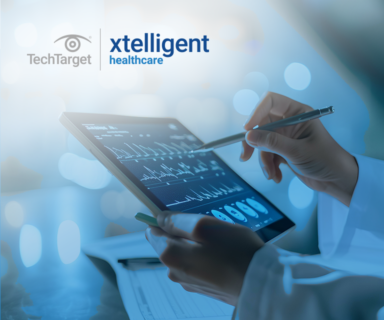- April 5, 2018
- Demand Generation, Intent Data
Leveraging GDPR Preparation into Better Attribution and Data Hygiene for All
 The other day I was meeting with my CMO to discuss client GDPR readiness, when the conversation abruptly shifted to clients dealing with data quality overall. This is often a touchy subject, especially between sales, marketing and the executive team, that never seems to quite “settle down.” On the one hand, you’ve got pressure to be conservative with the marketing budget which can make purchasing low-priced data seem like a good choice at least in the near term. On the other hand, if you go that route, you’re likely to sacrifice funnel conversion and be left with all this “stuff” filling up the top of the funnel (and occupying expensive space in your system licenses).
The other day I was meeting with my CMO to discuss client GDPR readiness, when the conversation abruptly shifted to clients dealing with data quality overall. This is often a touchy subject, especially between sales, marketing and the executive team, that never seems to quite “settle down.” On the one hand, you’ve got pressure to be conservative with the marketing budget which can make purchasing low-priced data seem like a good choice at least in the near term. On the other hand, if you go that route, you’re likely to sacrifice funnel conversion and be left with all this “stuff” filling up the top of the funnel (and occupying expensive space in your system licenses).
The problem with “lead source” – misguided attribution and poor data hygiene habits
Part of the problem is that many organizations measure their marketing and sales teams by where the lead was “sourced”. The thinking behind this is that if leads coming out seem “good”, then maybe we can simply buy more of the same. But this thinking is likely to get you into trouble. Here’s why:
With GDPR coming soon, you’ll need to easily understand the source of your data and the permission you have to use it, or you could be very expensively exposed. But even without this stimulus, using “lead source” as your attribution guide for future investment has already proven to be both an unreliable and an un-scalable approach to performance optimization for these simple reasons:
- What if the lead source is a 3rd party data vendor? How do you really know if marketing should purchase more from the same place or instead, invest a few dollars in nurturing activities such as events, email, webinars, direct mail, etc.?
- If your vendor is reselling data instead of creating it in a way you can easily understand, how do you really know if they’re capable of giving you the same quality more than once?
- Do you really even have permission to continue using that data in your system or does your contract actually call for its removal after a specified event or time period?
When it comes to buying data, there’s no industry watchdog or objective monitor attesting to accuracy, legitimacy or even legality. It’s truly a “caveat emptor” (buyer beware) situation out there right now, which is why more and more companies are trying to negotiate Proof of Concept agreements (POCs) to look before they leap. But if the measures they rely on are wrong, this merely prolongs the fallacy of cheap solutions and postpones the possibility of sustainable success. If they simply implemented a better quality process upfront – evaluating their vendors as part of this – they could instead begin improving their real impact immediately.
To buy or not to buy?
It’s helpful that systems now let us quickly measure initial email address quality (using deliverability), lead quality (via sensible scoring implementation) and business impact (from opportunity creation and pipeline information). The same kind of thinking needs to be applied when companies purchase data – whether it is to “backfill” missing fields or to further enrich the records they already have.
Building an ideal customer profile (ICP) can help you narrow down the fields that you should definitely fill in. Of course, even fill-in data purchases can be expensive. And certain executives will argue against spending money on populating data records that they don’t personally care about. Ironically, without the right data in place, you often don’t have what you need to determine whether or not you should care.
We should all strive for more accuracy and completeness with our records. But why should you care enough to invest in ways to achieve this? To find out, ask yourself the following questions – if the answer to any of them is “yes”, you’ll want to consider augmenting your data from a reputable source:
- Do these records help fill out your target account and target buyer profiles so that you can segment your activities better?
- Are these companies and people in geographies where you have or need sales coverage, so that you’ll be able to follow up properly?
- Are they titles that participate somewhere in the buy cycle as part of the extended buying team, without whom it’s harder to take a deal to close?
Good data hygiene isn’t just about GDPR – it’s about better ROI
While preparing for GDPR can seem like one more data hoop you have to jump through, the upside is that it’s really forcing companies to have some strategic conversations about their data issues and data handling strategies. As automation platforms advance further, having more complete and accurate data creates an opportunity to re-evaluate the metrics you’ve inherited. It’s a good time to assess KPI usefulness in driving real impact on the business. At the same time, it offers you a chance to create new insights that can help guide you in your pursuit of improved ROI. At an absolute minimum, whether for GDPR or simply because it’s time to get serious about this stuff, accurate and complete data helps better focus your marketing, it increases sales productivity and it makes adapting to new requirements less onerous and costly.
B2B demand generation, demand generation, GDPR, Lead attribution, lead generation, lead source



